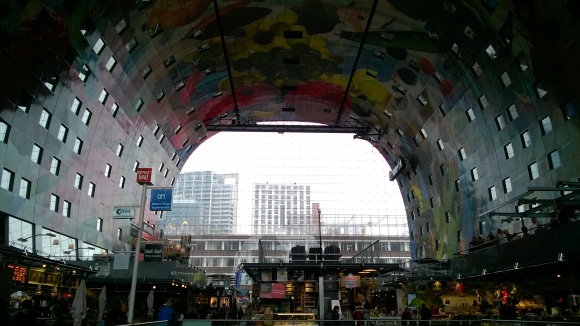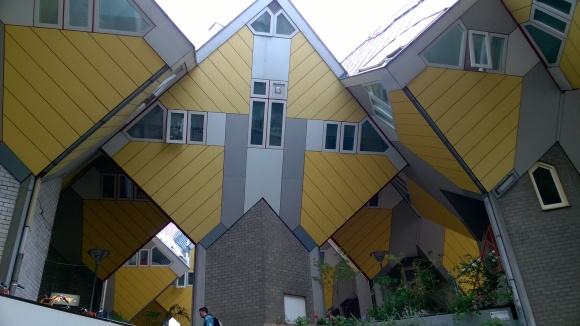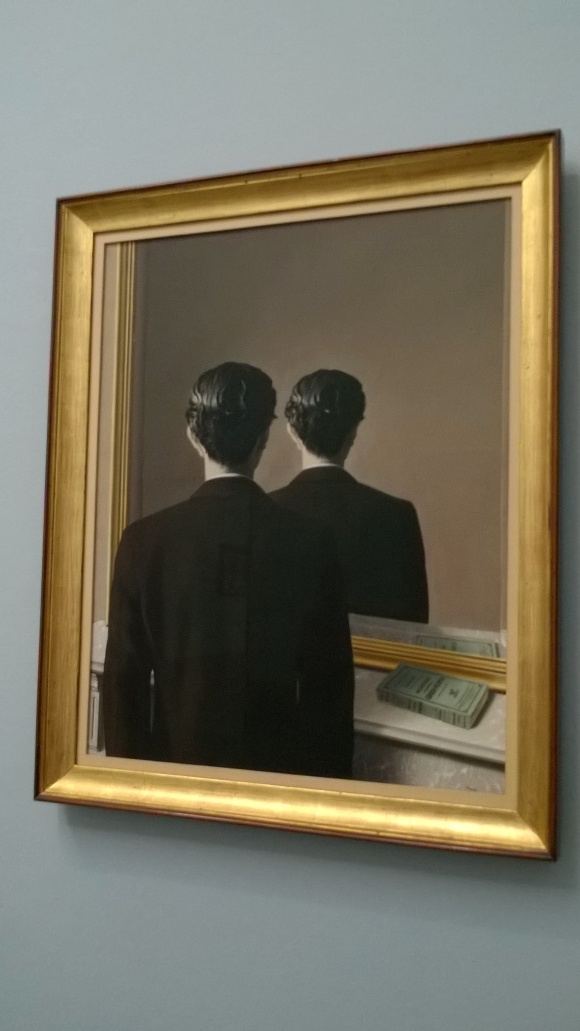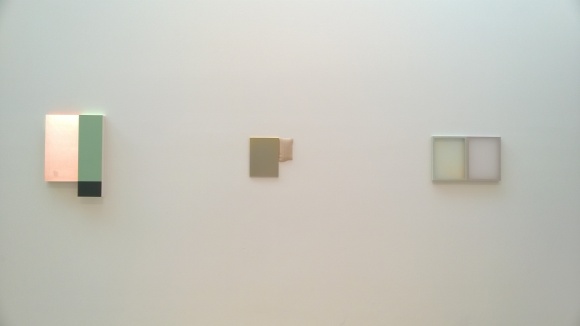
Set in the very central Belmacz space, The Conformist is truly an unusual show, linking modern to contemporary artists, as well as art itself to fashion and jewellery design. Main theme of the exhibition is the question on conformity/deviance, and its declination through the passing of time. The twenty-one artists included share a reflection on the moral and aesthetic codes of Western society. Their works are the result of this creative thinking, and they can be of the most different register, from serious to playful, form ironic to melanchonic, from sharp to mellow. Here’s just a taste of what you will find if you go to visit it.
Helen Bullock, coming from textile design, has created a window installation characterised by strong colours, as well as a floor decoration for the lower ground. Her vivid contribution, featuring red brush strokes on the window, torn textile with a floreal (or phallic?) allusion, handmade bracelets and a long knotted cloth hanging from the ceiling is instrumental in driving the viewer inside the exhibition space.
The curator and artist Paul Kindersley has chosen two main sites of inspiration: the first is In Youth is Pleasure (1945), a novel by Denton Welch, a worn copy of which is available to flicker through, dealing with the sensual fantasies and erotic experiences of an obsessive teenager during a non-specified summertime. The second is the flamoboyant figure of Lady Emma Hamilton (1765-1815), well-known for her extravagance and a symbol of Romantic love because of her wretched love affair with Lord Nelson (1758-1805). Her presence is announced to be the red thread of the exhibition since entering the gallery: She enigmatically beams from an etching (copy of a painting by the portraitis George Romney), her head covered with a pure-white veil. Exactly in front of her, Helen Chadwick’s Ruin (1986) parallels an interest in the body as main agent of conformation or not to the mainstream of aesthetics. The late artist’s naked body, in contrast with Emma’s covered attire, twists in an unconfortable yet intriguing pose, while with her left hand she covers her face from direct eye-contact with the viewer, and rests the right hand on a skull, probably referencing Shakespeare. Behind her, a still-image of fruit decomposition completes the work, where the artist is both photographer and photographed, maker and object, in a game of attraction-repulsion with the viewer that challenges the Platonic conception of beauty as positive attribute.
Two video installations, one by Kindersley himself (Lady Hamilton’s Attitudes, 2014), one by Julie Verhoeven (Phlegm & Fluff, 2015), make use of the body too in addressing, in different ways, questions of genre, sex, perversity, grotesque. I found that watching each of them with the relevant soundtrack, while the other was in silent mode, would give a completely different atmosphere to the entire exhibition. Interesting how different music enables diverse emotional responses to the same space.

The exhibition also features some charming pieces of jewelry, like the sophisticated gold string with charms by Julia Muggenburg recalling again Lady Emma in its ancient style. Roman coins, red coral, black pearls and citrine drops, as suggested by James Cahill in his introduction to the exhibition, recall different aspects of Lady Emma’s personality, while the string itself let us face an ambiguity – chastity belt or erotic ankle necklace?
I find The Conformist an interesting experiment of mixing fields. It is imaginative and witty. I won’t steal the pleasure of surprise by giving away too much of it! If you are looking for a fresh, nonconformist show, visit The Conformist at Belmacz show room, until 16th April 2016. Entry is free.
Useful links: http://www.belmacz.com/gallery/
All pictures credits: http://www.belmacz.com/gallery/current


















